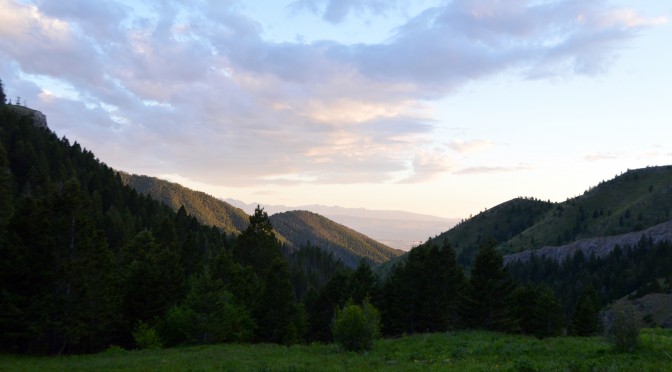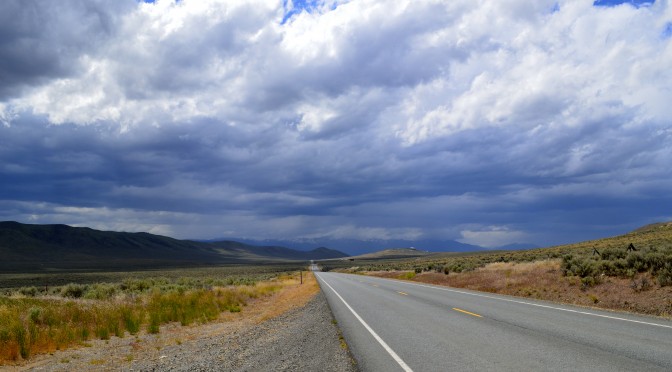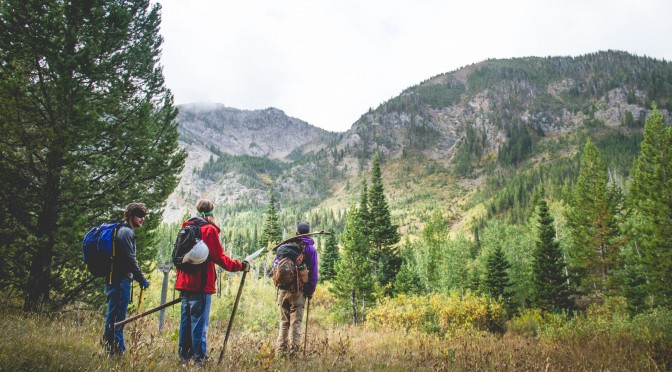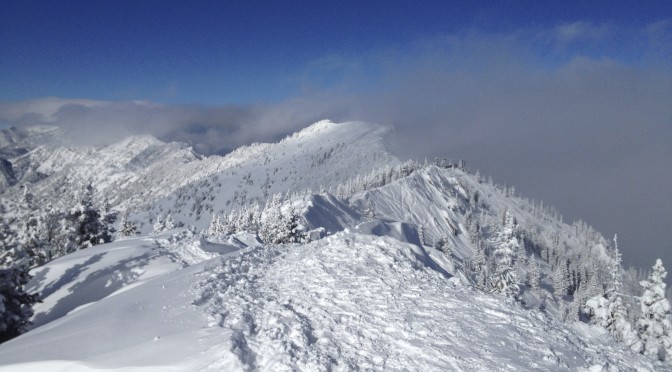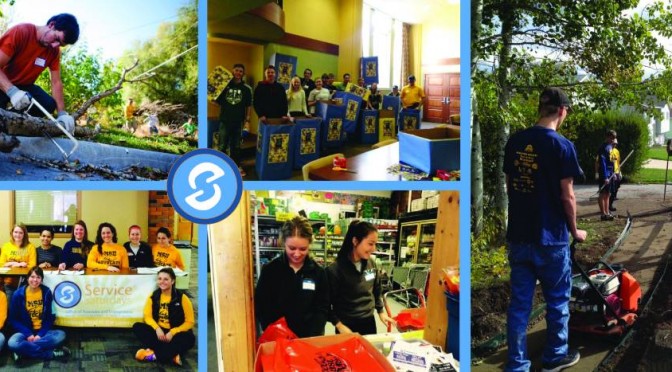How not to be “that guy”.
by the editors of Outside Bozeman magazine
We’ve all seen him: the guy up on the ridge who looks like a total mess. He’s holding the line up, he’s swinging skis and poles everywhere, and he’s stopping in the middle of everything to fix his gloves. His I’ve-never-done-this-before friends have tagged along just to make things worse for everyone.

Bridger’s Ridge: full of freedom, provided you play by the rules.
Granted, at one point or another, we all took our first step onto the ridge and our lives haven’t been the same since. And in doing so, we all made mistakes along the way and people either yelled at us or abandoned us to figure it out ourselves. But first semester is over, so here’s how to behave the next time you step into the bootpack and begin climbing the stairway to heaven.
1. Stopping in the Bootpack. It’s okay to get tired, but don’t do it in front of 100 hungry powder skiers. Step off to the side and take a few deep breaths. You’ve got all day and having a heart attack on the bootpack would really suck. Step to the side and enjoy the day while the speedy jerk behind you runs to the top to prove his manhood.
2. Urinating. Not in the bootpack. Ever. And even on top of the ridge, please step off of the beaten path to relieve yourself. We understand that this is the great outdoors and you feel so free and alive. Take a few steps sideways to achieve your Zen cleansing so that we don’t have to look at it while sucking wind and sweating out our eyeballs. The moaning is kind of weird too, but we can deal with it.
3. Adjusting Gear. Your skis came loose, your jacket got too hot. We get it. Mine did the same thing 20 steps back. The only difference is I didn’t attempt to fix it with a line of people behind me. This seems so obvious, you would think, but if I had a nickel every time… ah screw it, you get the picture. Step to the side.
4. Planning Ahead. About that hot jacket. I don’t care how many vertical feet you’ve logged on the Stairmaster at Access Fitness, climbing uphill in heavy-ass ski boots is hard work. Plan ahead and strip off your insulated down coat before the hike. At the very least, open your pit zips and unzip the front. You’ll be cold for all of about 60 seconds.

Your reward: the steep and deep.
5. Hogging the Loading Zone. For the patroller’s sake and that of everyone else, leave a path through the loading zone. This means at the top and the bottom. People need to get through, as in from one side to the other, so make it possible. Take all the time you need strapping and unstrapping equipment, but get out of the way while doing it.
6. Unwieldy Poles and Skis. While loading or hiking, turning around abruptly while shouldering skis will leave a wake of destruction. Be aware of where your gear is at all times and don’t take people out with it. And please don’t stab people behind you with your poles.
7. Sideslipping. Maybe this one is taking the list too far, but we thought it was worth a mention: if you’ve got first tracks on something, please don’t ruin it for everyone else. If you can’t do it right, maybe stick to something a little easier next time.
8. Bringing Your Girlfriend. Only kidding, but know the limit. Some people aren’t at the proper level yet, and bringing a beginner or inexperienced person into this terrain is not only a bad idea, it’s simply dangerous to him or her and everyone else.
9. Beacon Ignorance. Know how to use them and practice regularly. Nothing says “I shouldn’t be skiing here” like not being familiar with your avalanche transceiver. Simply putting one on is not good enough. Yes, that’s all they require for you to hike the ridge; but when the time comes to dig out your buddy, staring blankly at that thing strapped to your chest for 10 minutes will cost someone his life. Shovel and probe proficiency will help mitigate disaster as well.
10. Unknown Zones. Know where you are at all times. If you’re new, bring someone who isn’t. Do not ski something that you’re unsure of, as many areas on the ridge cliff out, and this will put you and the people who have to come help you in danger. And with multiple access points to the ridge now, choose the appropriate one for where you are going. If you find yourself hiking north from Slushman’s and down-climbing Z-Chute, you’ve gone too far.

Congratulations: you’re no longer “that guy”.
Bonus: It isn’t against the law for your pack to be loose and dangling, your skis to be swaying in the breeze, or your jacket to be dragging on the ground. But for the love of God, keep your shit in check.

